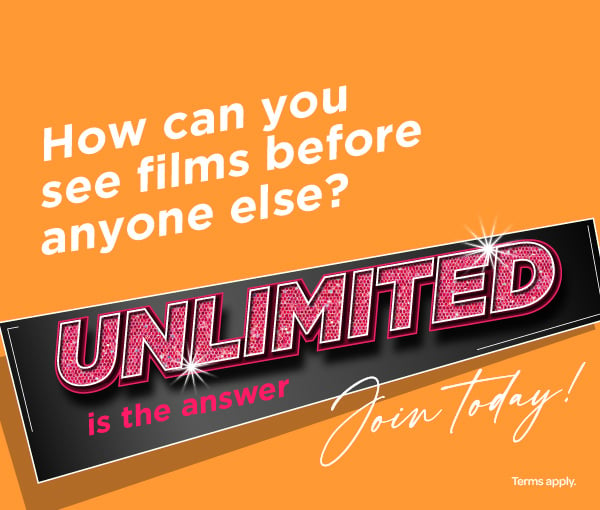
The 25th James Bond movie No Time To Die arrives in Cineworld in September, and we're counting down the days by revisiting all the 007 movies in chronological order of release.
In honour of Daniel Craig's swansong as 007, we're taking a nostalgic trip back through time. This week: Pierce Brosnan makes his Bond debut in GoldenEye.
What is the story of GoldenEye?
Nine years after the apparent execution of his best friend, James Bond/007 (Pierce Brosnan) is alerted to the hijacking of a specially designed helicopter, designed to withstand an electromagnetic (EMP) pulse blast. The trail leads to Russia, where rogue General Ourumov (Gottfried John) is collaborating with the deadly Xenia Onatopp (Famke Janssen) to steal a top-secret EMP weapon known as 'GoldenEye'.
However, Ourumov and Onatopp are, in fact, in the service of an even deadlier enemy: the presumed-dead Alec Trevelyan/006 (Sean Bean), who seeks to use GoldenEye to enact revenge against Western superpowers. With the help of programmer Natalya (Izabelle Scorupco), Bond must race against time to stop his former friend in his tracks.
How did GoldenEye get made?
Ever since its inception in 1962, the James Bond franchise had been through its fair share of bumpy patches. Usually, this was caused by a change in actor; think, for example, of the shift from Sean Connery to George Lazenby, and back to Connery again. This was because Connery had become disillusioned in the role after 1967's You Only Live Twice, but Lazenby only agreed to make one movie (1969's On Her Majesty's Secret Service), leaving producers Albert R. 'Cubby' Broccoli to court the former again with a massive salary and elaborate creative demands. The end result: 1971's Diamonds are Forever.
By and large, the franchise had weathered these difficult moments, allowing actors of different backgrounds and calibres to tackle author Ian Fleming's iconic MI6 agent. This was most pronounced in the shift from the urbane, wry Roger Moore to the intense Timothy Dalton – a microcosm of how the Bond movies continued to shift in tone, as they responded to the concerns of the pop culture landscape around them.
In the early 1990s, however, the Bond franchise was experiencing its most drastic crisis. Dalton had made The Living Daylights in 1987 and Licence To Kill in 1989, and he was contracted to appear in one more movie. His first two films were far grittier, darker affairs than the preceding Roger Moore vehicles – Licence To Kill, especially, caused controversy with its 15-rated violence and gore.
But one can forget killer sharks and maniacal super-villains bent on world domination; it was the legal wrangles involving Bond production company Danjaq that threatened to kill off 007 altogether. Along with Eon, Danjaq had been formed by Broccoli in 1962 in order to get the Bond movies made. By the late eighties and early nineties, Danjaq was in collaboration with MGM, parent company of Bond distributor United Artists (UA). However, this partnership ran aground in 1990 when MGM/UA was sold to company Qintex; a complex series of lawsuits and counter-suits ensued.
This was especially unfortunate given the third Dalton movie was meant to enter pre-production in 1990 in Hong Kong, the filmmakers set to work from a script from Bond producer and screenwriter Michael G. Wilson. The film would have taken inspiration from Fleming's short story The Property of a Lady, itself referenced in Octopussy, and was announced at the 1990 Cannes Film Festival. At the time, several directors were being considered by Cubby Broccoli, including The Blues Brothers' John Landis; however, these plans hit the skids. Only when the MGM/UA lawsuit was resolved in 1992 did the third Timothy Dalton movie again enter production.
Dalton expressed enthusiasm for the new script developed by screenwriter Michael France; he claimed it fused the best elements of The Living Daylights and Licence To Kill, and promised to send his Bond off in style. However, Cubby Broccoli stipulated that it wouldn't be enough for Dalton to make one more Bond film, but would instead have to commit to several more. Dalton ultimately declined – his original, seven-year-long Bond contract had, in fact, expired in 1993, aggravated by all the MGM/UA delays.
The way was therefore open for a new actor to take on the role of 007. With Cubby Broccoli's health failing, he deferred many duties to his daughter Barbara, who swiftly rose to become the powerhouse of the Bond franchise, along with Michael G. Wilson. In 1994, the producers eventually returned to actor Pierce Brosnan, who had been signed to take over from Roger Moore in The Living Daylights, before contractual issues with his TV series Remington Steele effectively handed the role over to Dalton. The final product would become GoldenEye, whose script (credited to Jeffrey Caine and Bruce Feirstein), is said to have incorporated many aspects of the earlier Property of a Lady treatment by Michael France.
Even with the MGM/UA issue resolved, the political and pop culture landscape had changed dramatically since the last Bond movie in 1989. That was the year that the Berlin Wall had been brought down and the Soviet Union dissolved, ending the Cold War that had underlined the entire landscape of the Bond universe; no longer could the franchise glibly riff on the paranoia and suspicion shared between East and West. It was now incumbent upon the movies to acknowledge a brave new world, and ensure 007's relevance by marching him into an atmosphere of (relative) unity.
This is openly acknowledged in one of GoldenEye's most famous scenes, in which the new M (played to scene-stealing effect by Judi Dench) disparages Bond as a "sexist, misogynist, dinosaur, a relic of the Cold War". It's one of the most self-reflexive moments in the entire franchise, an acknowledgment by the filmmakers that the series' inherently dated attitudes towards gender, sexuality and politics must adapt in order for the Bond character to survive. The casting of stage and screen veteran Dench is one of the many ways GoldenEye announced itself as an exciting, topically relevant Bond movie for a brand new era.
The casting of the youthful, exuberant Brosnan also helped enormously; in contrast to his brooding predecessor, Brosnan found a happy medium between Sean Connery's rogueish single-mindedness and Roger Moore's facility with dry quips (not to mention a skill with the ladies). Goldeneye's status as a pioneering, cutting-edge Bond was further enhanced in the casting of Sean Bean as villain Alec Trevelyan; like Brosnan, he's a physically lithe and relatively young presence, capable of going toe-to-toe with 007 both physically and mentally. This is borne out in several excellent sequences, from the mind games in the eerie, statue-littered environs of St Petersburg's Statue Park, to the violent finale atop Trevelyan's satellite cradle.
The latter scene is one of the best fistfights in the series, clearly owing a debt to the classic Sean Connery/Robert Shaw dust-up on the Orient Express in 1963's From Russia With Love; the brutal nature of the scene, accentuated by realistic sound effects and actors plunging themselves into the stuntwork, is another aspect that announced GoldenEye as a film looking to keep up with the 1990s blockbuster competition. By the mid-1990s, movie blockbusters were becoming ever-more expensive and outlandish, exemplified by explosive Michael Bay vehicles such as Bad Boys and The Rock. (Due to its increased violence, Goldeneye, edited for a 12 certificate for its theatrical release, was reclassified as an uncut 15 on DVD.)
GoldenEye does, in fact, sport one of the most memorable supporting casts of any film in the series. The ensemble is brilliantly utilised by director Martin Campbell, who was selected in part for his work on celebrated 1985 BBC TV series Edge of Darkness, starring the late Bob Peck. The paranoid nuclear series could actually be seen as a dry run for the post-Soviet Union landscape of GoldenEye, in which loyalties are continually subverted and divided; this arises in the uneasy union between Trevelyan and the imposing Colonel Ourumov. It turns out that Trevelyan's motives are spurred on by the death of his parents, revealed to be Cossack traitors, Russians who collaborated with the Nazis during World War II – and later repatriated to the Soviet Union. Ourumov is unaware of this – one of many reflections of the new political environment in which the Bond series was operating.
From the haggard-looking Gottfried John as Ourumov to the deliciously twisted Famke Janssen as Xenia Onatopp, GoldenEye has memorable characters (and innuendo-laden names) to spare. Janssen is terrific as the diabolical Xenia, squeezing men to death with her thighs and gunning down hordes of innocent satellite engineers. Truthfully, the Bond franchise hadn't seen a female henchwoman this memorable since the heyday of Fiona Volpe (Luciana Paluzzi) in 1965's Thunderball.
Providing an effective counterbalance is the understated Izabelle Scurupco as Natalya, the engineer who witnesses the theft of the GoldenEye, and the murder of her colleagues. In another sign of the film's somewhat more progressive nature, Natalya is no mere damsel in distress, but an expert computer programmer who plays a key role in helping Bond track down Trevelyan. During the scene in which she and Bond are trapped inside Trevelyan's booby-trapped train car, she hacks the villain's computer system and discovers where he's travelling to next. At the end of the movie, she commandeers an enemy helicopter and rescues Bond from the exploding satellite cradle, after the latter has coldly dropped 006 to his (almost) death, stating it's not "for England" but "for me".
It's, therefore, a shame that GoldenEye, for all its subversive and self-aware elements, should resort to the tired Bond formula so easily. From action sequences that fail to advance the plot to the cliched finale where 007 carries the Bond girl off into the distance, the movie occasionally lacks the courage of its convictions, something that could not be said of the ruthlessly violent Licence To Kill, one of the most singular, uncompromising entries in the series. These weaknesses would become pronounced with each successive Pierce Brosnan movie, as logical fallacies, cheesy lines and brainless set-pieces started to pile up on top of one another.
At the very least, GoldenEye has intelligence on its side, exploring 007's weaknesses via the medium of a best friend turned traitor. And the stunts are some of the best in the entire franchise; this is where the movie announces itself as a far glossier, more spectacular movie than its predecessors, flaunting a hefty $60 million budget (nearly double what Licence To Kill cost to make). Under the assured eye of Martin Campbell and veteran editor Terry Rawlings (a regular collaborator with Ridley Scott), GoldenEye's set-pieces take the breath away.
The movie begins with a stunt that is nothing less than a statement of intent: a near-silent bungee-jump off a towering Russian dam (actually the Contra Dam in Switzerland), which demonstrates that this particular Bond film has stepped up its game – and then some. The record-breaking stunt was performed by Wayne Michaels. Jaw-dropping moments such as these are fused with the first use of CGI effects in the history of the franchise, plus elaborate miniature effects from artist Derek Meddings, who made GoldenEye his final 007 movie. This is notable in the explosive destruction of the Severnaya research station by Ourumov and Onatopp.
Of course, for all of GoldenEye's swanky 1990s assets, one cannot have a Bond movie without the standard ingredients. This includes another amusing appearance from Q (Desmond Llewelyn), who gets one of the best lines in the series when he grabs a baguette from Bond's hands, claiming "that's my lunch". Interestingly, cars and gadgets are somewhat downplayed in GoldenEye; although Bond is equipped with a sleek new BMW Z3 Roadster. Disappointingly it isn't used, bar a brief moment where Bond and Natalya are driving towards Trevelyan's hideout.
Said location was, in fact, Puerto Rico, one of several quintessentially exotic Bondian locations. Others included Monte Carlo, used for the casino scene where Bond meets Onatopp for the first time, having raced her Ferrari in his classic Aston Martin DB-5 beforehand. The filmmakers were unable to use the 007 Stage at Pinewood Studios for interior shots, as it was rented for Sean Connery King Arthur vehicle First Knight. Instead, the crew used the newly developed Leavesden Studios, which doubled for certain scenes set in St Petersburg. (Exterior shots of London also doubled for the city.)
READ MORE
- No Time To Die and the 6 James Bond movies we never got to see
- 7 actors who could play James Bond after Daniel Craig retires
- Shaken and stirred! Daniel Craig's defining 007 moments
What music is on the GoldenEye soundtrack?
GoldenEye boasts one of the best theme songs in the series, performed by pop icon Tina Turner, and written by Bono and The Edge. Swaggering with a classic sense of Bond energy, it's exactly what audiences needed to blow away the Cold War cobwebs, all the while welcoming 007 back to the big screen for the first time in six years. Turner's work in fact replaced an earlier song by Swedish group Ace of Base, whose work was rejected but later turned up on their 2002 album De Capo, under the name, 'The Juvenile'.
In the context of the movie, the track is amplified with artist Daniel Kleinman's credit designs. Kleinman replaced longstanding credit designer Maurice Binder, and his arresting compositions have graced all of the recent Bond movies, bar 2008's Quantum of Solace. The sequence is adorned by hammers and sickles falling through the eye, signifying the end of the Cold War and the collapse of Soviet Union authority – a metaphorical depiction of Bond's new place in the world.
Given the authoritative nature of Turner's delivery, it's disappointing that the accompanying score by Eric Serra doesn't riff on the song's catchy melody. (This would become an issue during the later David Arnold and Thomas Newman-scored Bond movies.) In fact, Serra's score is widely regarded as the weakest element of GoldenEye, and for good reason. The score deploys the brooding metallic percussion familiar from his score to 1994's Leon, which worked brilliantly in the context of that (far-darker) movie, but lacks the romance and allure needed from a Bond score. Despite the arresting, electronic twist on the opening gun barrel music (composers Michael Kamen and Bill Conti had also revised this in their respective movies), the score doesn't live up to expectations.
There's no denying that Serra's score has its effective moments, including the choral-inflected scene where Bond walks through Statue Park in anticipation of his meeting with Trevelyan. Occasional bits of clanking percussion and timpani are simplistically effective in mirroring the echoing corridors and archives found in the buildings of the Soviet Union. But the score is badly undercut with moments of squelchy synthesised composition that simply lack the gravitas John Barry would have brought to the project. (Barry was approached to score GoldenEye, but turned it down.) The opening Aston Martin/Ferrari car chase scene is a case in point.
So contentious was the nature of Serra's score that British composer John Altman was brought in to beef up the presence of the Bond theme during the St Petersburg tank chase. Maybe the filmmakers were being subversive in their use of Serra's avowedly non-romantic score, but it's the one aspect of GoldenEye that hasn't stood up well.
How was GoldenEye received?
GoldenEye was a tremendous financial success upon its release, ultimately grossing $355 million worldwide; this made it the second most successful movie in the series after Thunderball. And critics were largely kind, too.
In the Chicago Sun-Times, Roger Ebert gave the film three out of four stars, and said Brosnan's Bond was "somehow more sensitive, more vulnerable, more psychologically complete" than the previous ones, also commenting on Bond's "loss of innocence" since previous films.
Nevertheless, several critics thought it was time for the franchise to move on. Richard Schickel of Time wrote that after "a third of a century's hard use", Bond's conventions survived on "wobbly knees".
Even so, with that kind of lucrative response, Brosnan's position as Bond was secured. The movie was exponentially more successful than Licence To Kill, and GoldenEye's enduring legacy was cemented in the minds of 1990s kids with the release of the GoldenEye Nintendo 64 game. This is widely considered one of the greatest and most immersive shoot-em-up games of its period, if not ever, and in many ways has threatened to overtake the movie in terms of pure nostalgia value.
GoldenEye was also a historic moment in the series: it was the last of the films to be overseen by Albert R. 'Cubby' Broccoli, the godfather of the franchise who, along with original partner Harry Salztman, had got the Bond behemoth off the ground with 1962's Dr. No. In his capacity as producer, Broccoli, who died in 1996 prior to the release of Tomorrow Never Dies, had steered the character of 007 through multiple challenges and an ever-changing pop culture landscape, helping to sustain his relevance and cultural authority. Without Broccoli, the Bond saga wouldn't exist, and the movie landscape would be a very different place.
What was the next movie in the James Bond series?
Pierce Brosnan returns as 007 in Tomorrow Never Dies, released in 1997.
When is No Time To Die released in the UK?
Click here to book your tickets for No Time To Die, which is released on 30th September. Don't forget to tweet us your favourite James Bond movies @Cineworld.

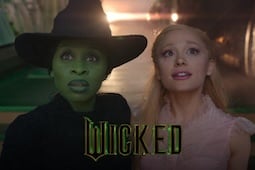

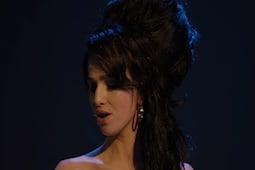
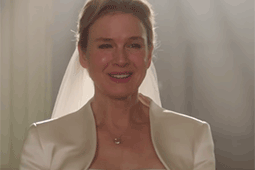
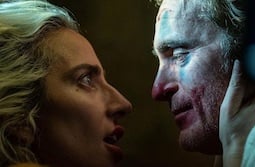
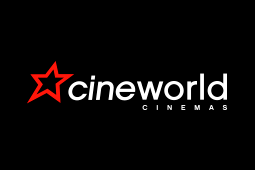
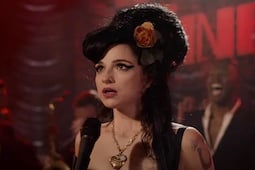
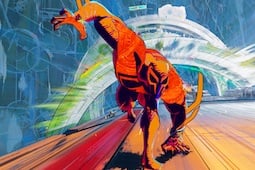
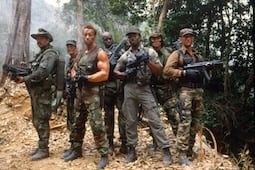
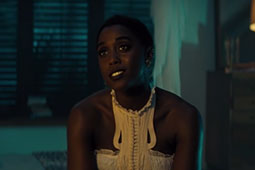
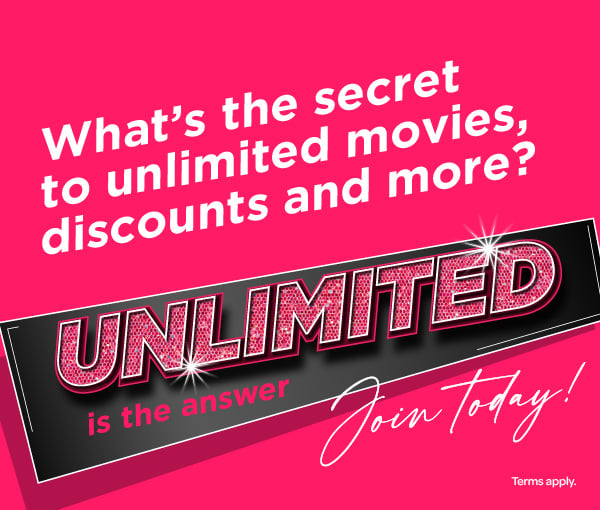
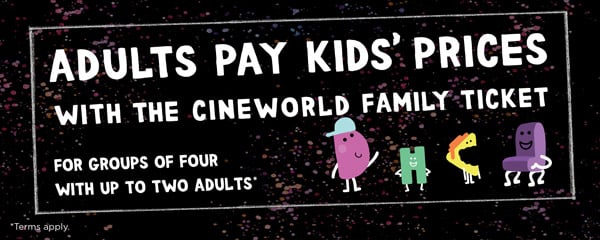
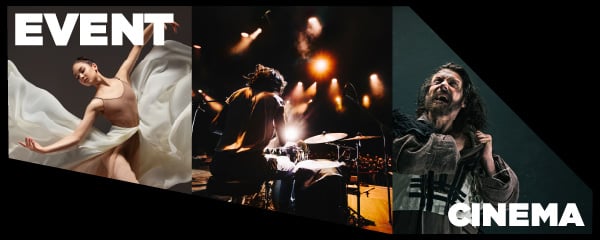
.jpg)
.png)

